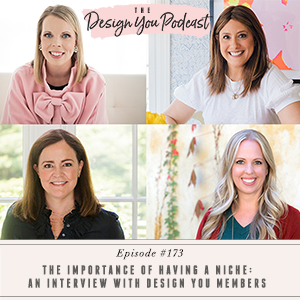
A couple of months ago, I did an interview with my Millionaire Mentorship members and I loved it so much and know that it brought y’all so much value that I just had to do the same with some current and former Design You Membership members. These members saw the possibility for digital scalable products and they leaped, and are here to share their advice if you are looking to do the same.
This week I’m bringing you four powerhouse women who worked with us in Design You and overcame their fears to create incredible digital programs in their businesses. It is remarkable how different their programs are and how they really bought into the concepts we teach in the membership, and they’re here to share it all with you this week.
Tune in this week and hear from Jill Kalman, Rebecca Ward, Renée Biery, and Liz Toombs about their experiences of creating digital courses, services, and scalable products and how they have implemented what they learned from the Design You membership into their businesses. Hear why having a niche is vital in your business and how to be brave enough to put yourself out there to people who need it most.
If you want help creating a business with thriving revenue streams so that you can design the life you really want this year, now is your chance! We’re going to be opening the doors to the Design You Coaching Program in just a few weeks, and with this round, we are launching a whole new course where I share my complete design system with you. You’ll receive every template, tool, SOP, worksheet, downloadable, video and more that I have created and used myself, and receive a complete step-by-step for how to run your full service projects. You do not want to miss this, get on our waitlist now!





